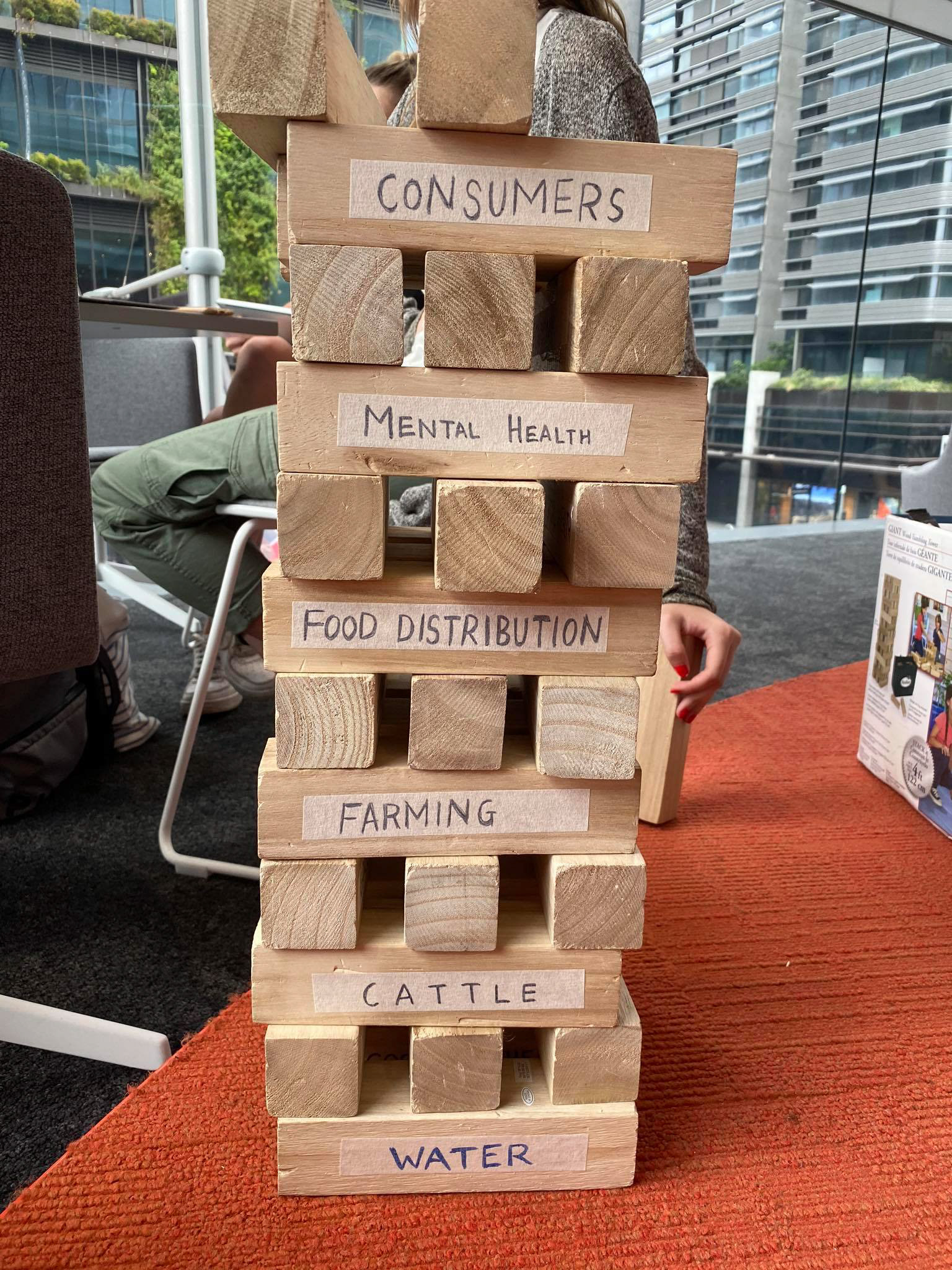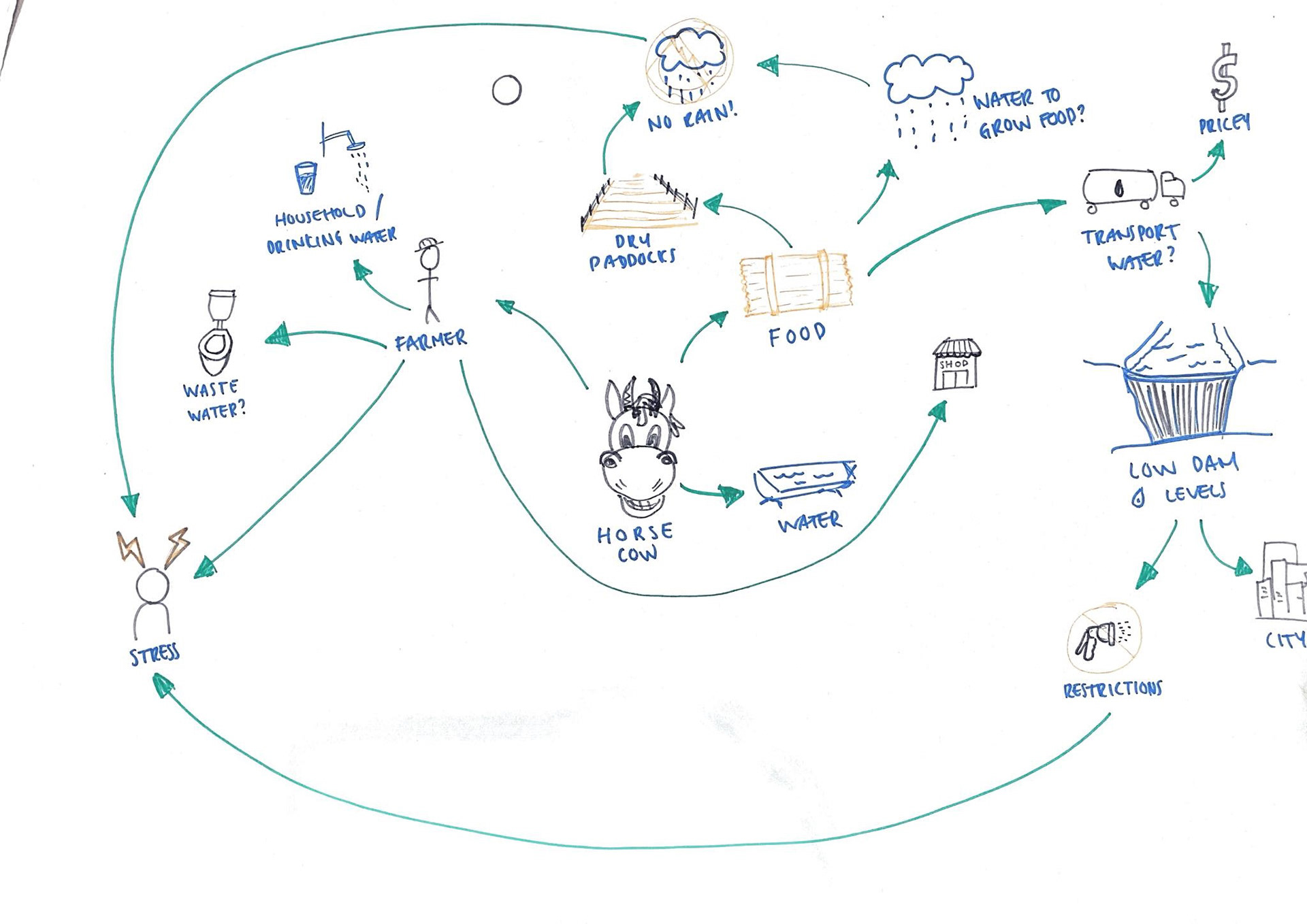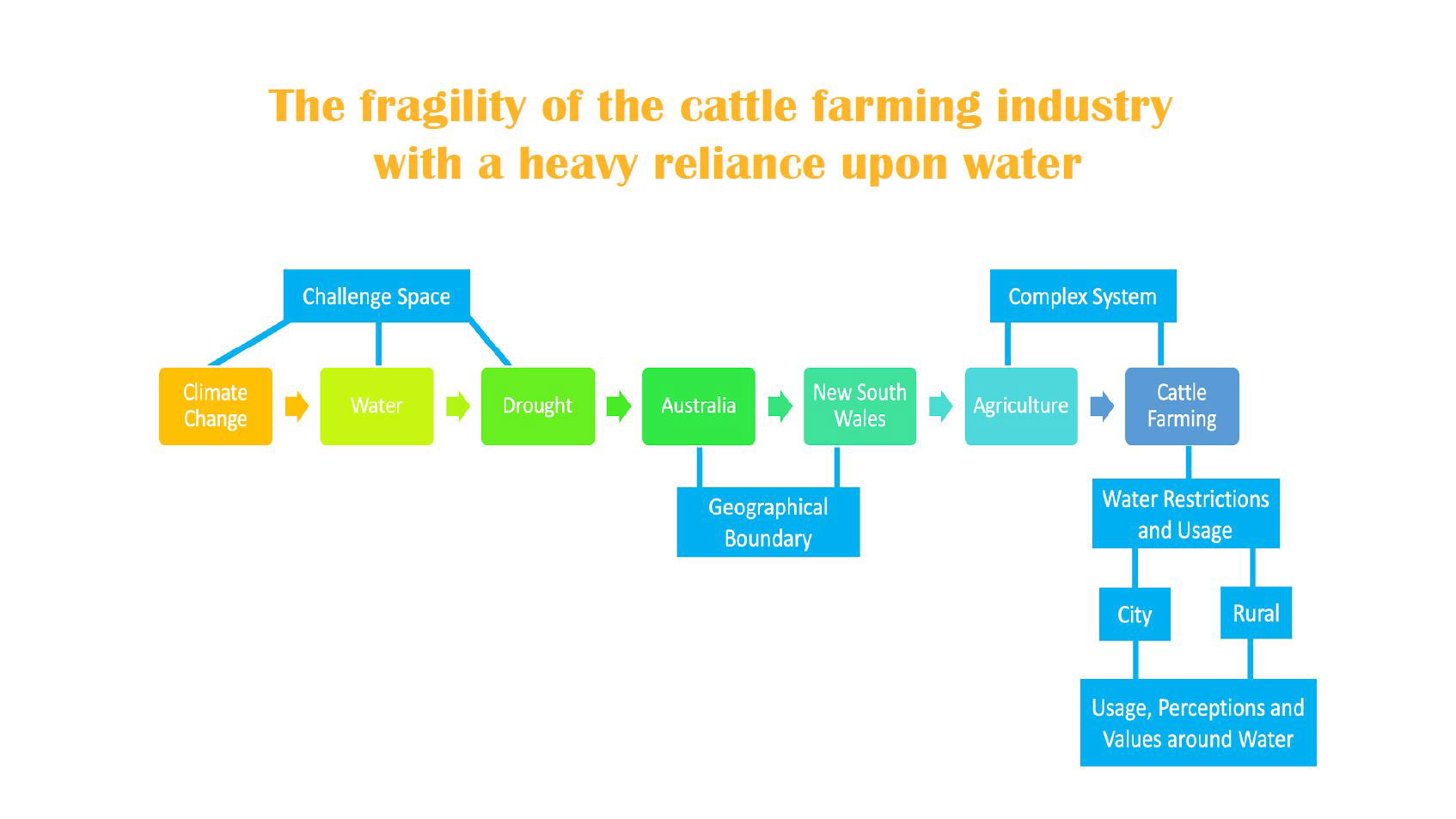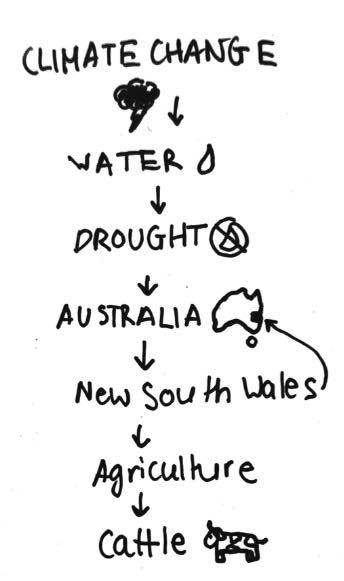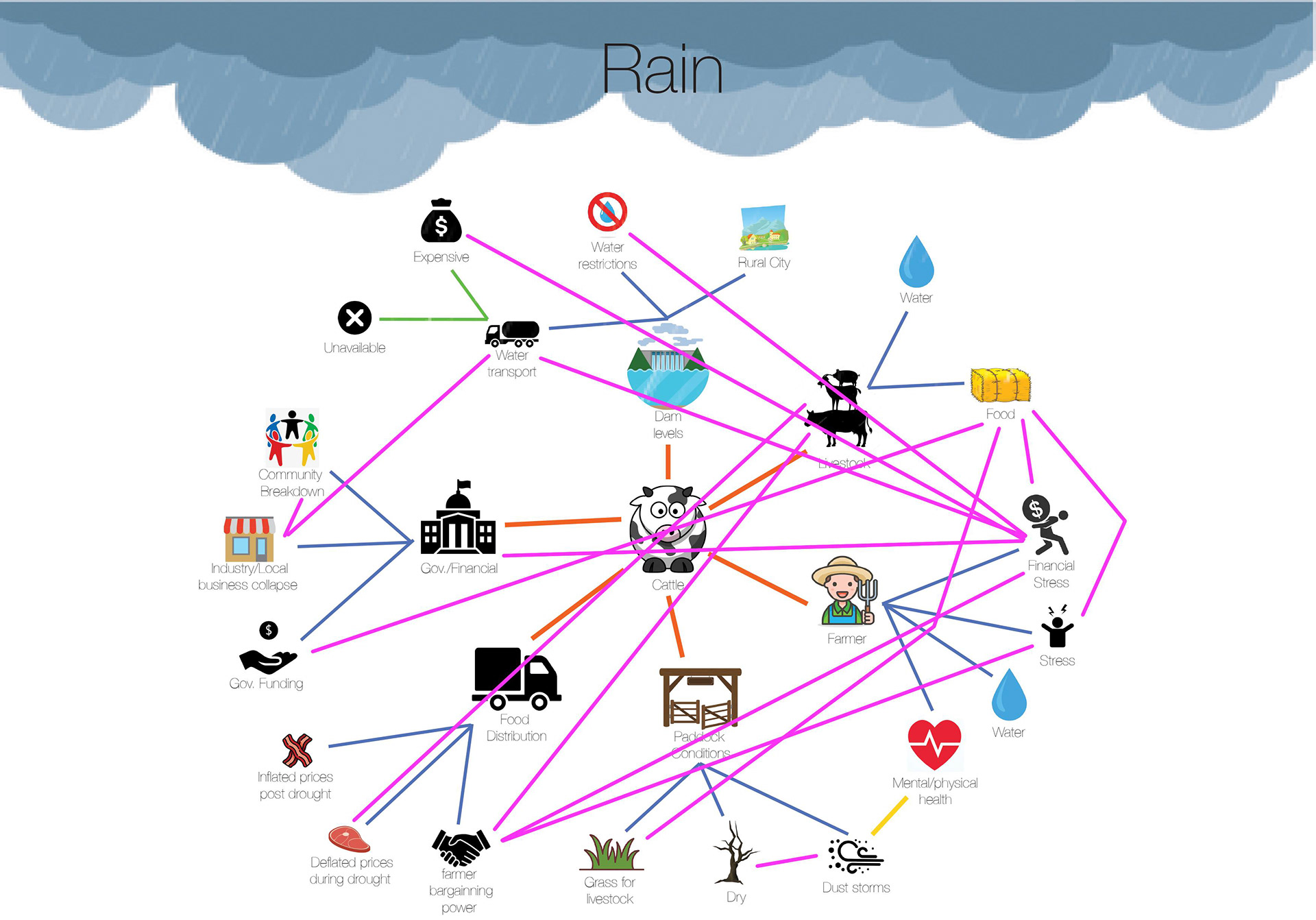A struggle of Resilience in the Cattle Farming Industry: exploration of the problem space & series of interventions

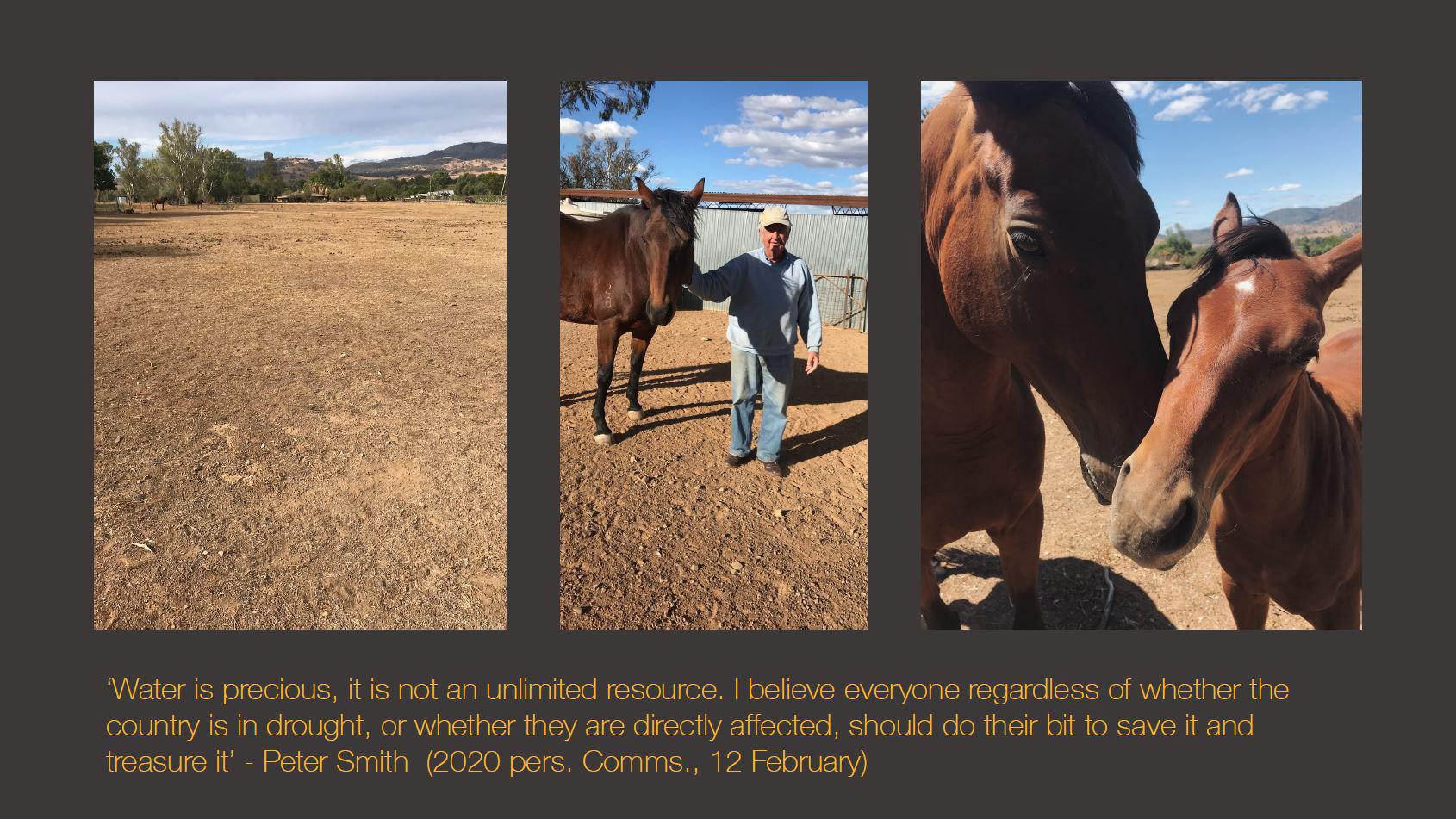
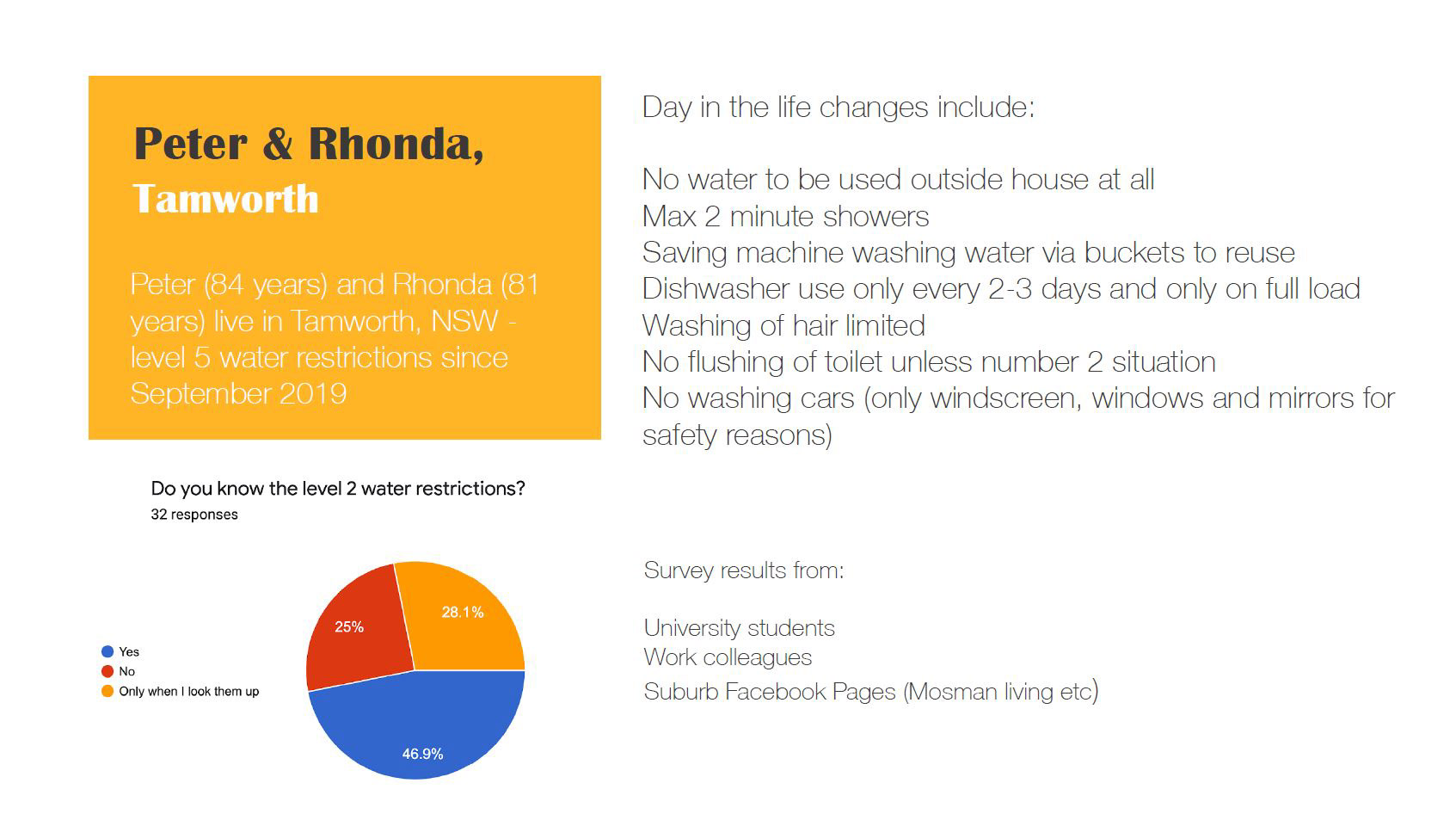

REFLECTION ON THE PROJECT:
Disciplinary framings of the challenge
As a Communications student majoring in Media Arts and Production, there are several key contributions by people in my disciplinary field of study that have attempted to change the mindset of ordinary Australian households by promoting more conservative water usage. For instance, journalists and media outlets have the power to educate the public by raising general awareness and knowledge on our poor water wasting habits. For example, The Conversation in “80% of household water goes to waste – we need to get it back” (2019) advocates for a systemic change involving the use of recycled wastewater which would assist heavily in reducing water wastage in every household. However, as suggested in the article, despite the technology being able to “reliably and safely make clean, drinkable water from all sources”, it has yet to be implemented in Sydney due to several community objections from a lack of education. Alternatively, places like El Paso have such a system in place due to strong efforts from media outlets to educate the public on its cleanliness and efficacy. Thus, in this case the media has played a significant role in changing the attitudes of people resulting in a better water reusage system. Alternatively, there is far more room for advocacy in this area through artistic efforts. There have been several documentaries and films on other environmental issues such as climate change and animal rights, for example Davis Guggenheim’s An Inconvenient Truth (2006) or Bong Joon Ho’s Okja (2017). However, there has yet to be a feature length project on water wastage that has hit the mainstream in the same manner. These films are vital as they can evoke a sense of urgency within their audience and in turn elicit less wasteful behaviours amongst Australia. Hence, my disciplinary field has made great progress in terms of journalistic media yet remained dormant on its more artful side.
Insights about the complex system
My group and I primarily attempted to test our hypotheses by gamifying many of our safe-to-fail experiments. In turn the results they produced helped us in determining the viability of our creative interventions while gaining insight on the mindset and behaviours of city residents and their water usage patterns. Firstly, we hypothesised that city residents of NSW were either not fully aware of water saving practices and/or were unwilling to engage with them. The survey results confirmed the lack of engagement with water saving practices by city individuals. However, it challenged our assumptions in some ways, as we found that most people believed water to be a precious resource that should be conserved. This finding proved that people’s attitudes were generally in favour of water saving practices and they just needed more provocation to adopt them.
Secondly, we proposed an app that visually breaks down how residents use water, in terms of water usage and money spent. This tested the hypothesis of if we could incentivise people to waste less water through visualising the impact of their water usage. The results revealed that when we made the nested relationship between their monetary consumption and their water usage apparent, they were far more likely to adapt their spending patterns to save more water. This built upon our original hypothesis, revealing that many city individuals are simply unaware of the negative impacts produced from their actions and confirmed that visualising their wastage would be a step towards more water conservation.
From looking at the other nested sub-systems that would relate to this app, it was determined that this would be mutually beneficial for the stakeholders involved including households, Sydney Water and the economy as people would contribute to the resilience of this complex system by saving water and reallocating funds spent on their water bill to other forms of consumption, resulting in economic growth. However, an oversight in this app is that it only includes household water usage via the water bill and does not outline other relevant expenditure e.g. the water wastage that ensues from the products they buy. It also assumes that all city residents own/use a smart phone. This could perversely lead them to be ignorant or complacent of how their other forms of expenditure impacts the environment.
Insights for your discipline and relevant professions
In my opinion, whilst the media does report on these issues, albeit not as much as it should, they rarely instil a sense of action upon their Australian audience. Whereas they greatly assist in raising public awareness and educating the community on wasteful water consumption, they assume that this alone will evoke a sense of action in households. However, it does not, as revealed by our safe-to-fail experiment surveying water use awareness and behaviours, most Australians lack knowledge on water conservation and its necessity. Journalistic media has yet to fill this gap. Instead, this role is largely left on underfunded and less popular non-government organisations who attempt to educate the public on water conservation tactics and its importance yet lack the platform they require to maximise the difference they can make. For example, Water Corporation attempts to educate Australians on water saving tactics through various system interventions such as school talk programs. Perhaps, media and journalists should intervene by outreaching and working in conjunction with such NGOs to give them the platform they require to educate and provoke action within NSW communities.
